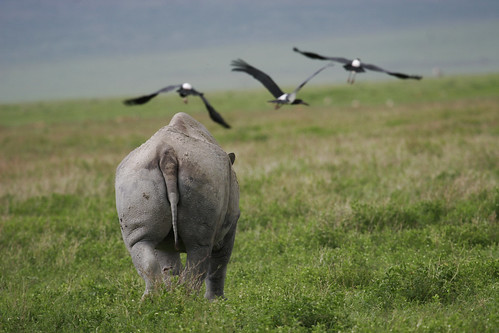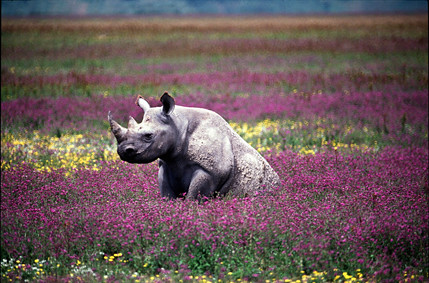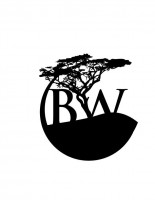
Devastated by the poaching frenzy of the 1980’s, black rhino populations are dangerously close to extinction. This period of heavy poaching killed off 98% of the black rhino population and saw the massacre of some 90,000 elephants in Tanzania’s 50,000 km² Selous Game Reserve, the second largest area of the world set aside for wildlife (second only to Antarctica). Today, just barely over 100 of these rhinos are left in this World Heritage Site. Their prized horns are highly valuable in the black market and are used in the Middle East and Asia for medicinal and ornamental uses.Only man is to blame for this atrocity, and it is only man who can reverse the situation. When trying to establish a safari lodge within the Selous Reserve, Lizzy Theobald recognized the immediate need for conservation action to save this rhino species and founded the Kidai Rhino Project in 1995.

Tragically, her vision was cut short two years later when malaria claimed her young life. Her legacy lives on through the Selous Rhino Trust formed in 2000, having one key goal: “to stop the black rhino from becoming extinct in the Selous Game Reserve”. The Trust works with the Tanzanian Wildlife Division to form the Selous Black Rhino Protection Project, a team of twelve rangers and rhino specialists committed to protecting the rhinos (and other wildlife) from poachers. The remote nature of the Reserve and its rough terrain gives poachers many places to hide and makes locating their activities challenging. To overcome this obstacle, the Project uses aerial surveillance and monitoring to identify poaching threats. When found, location information is radioed down to a team on the ground who moves in to apprehend the poachers. The use of aircraft allows for vast tracts of land to be covered in a timely fashion, while also serving as a deterring reminder of the team’s presence.
(Credit: Piet Payer)

There have been no signs of rhino poaching in the last four years at the Reserve, but signs of elephant and hippo poaching are increasing despite the committed efforts of this brave team. Aerial monitoring also aids in the Trust’s surveying activities by identifying prime rhino habitat and quantifying the number of rhinos within the Reserve. Areas identified by air are then surveyed and studied extensively by a team on foot. The Trust also conducts monitoring activities to identify population numbers and to track movements of individual rhinos across the Reserve. On the ground, rangers rarely see the rhinos, but seeing them is not necessary to estimate the size of their population. They use two non-invasive techniques to achieve this task. Dung is collected for DNA analysis, which identifies individuals, their sex, and allows for genetic linkages to be made between individuals. However, DNA analysis is an expensive and lengthy process. Another way to identify individuals on the spot with minimal costs is by tracing rhino footprints.
(Credit: Brandon Daniel)

Each rhino has a distinct footprint, and, when found, the team traces the print onto a transparency sheet and compares it to all previously-catalogued footprints. This allows the team to determine if the rhino is a new individual or is one they already know about. Many of Selous Rhino Trust’s methods and techniques have not been used before in Tanzania, but it is because of the rangers’ developed skills and knowledge of these techniques that their efforts have been so successful. Ranger training takes place at the ranger post, and the Trust often works with other rhino organizations and programs to share ideas and skills. If it weren’t for the Selous Rhino Trust, the Reserve’s black rhino population would undoubtedly be gone. The actions of these brave rangers and their dedication to preserving this majestic species gives hope to keeping the unique and rich Selous Game Reserve wholly intact.
(Credit: Fernando Quevedo)

To learn more, please visit their website

